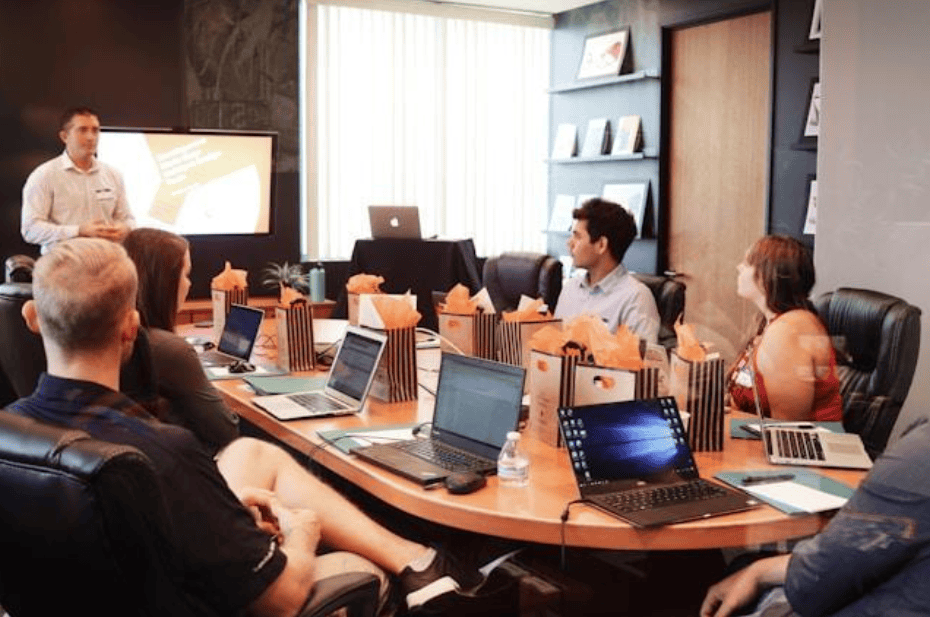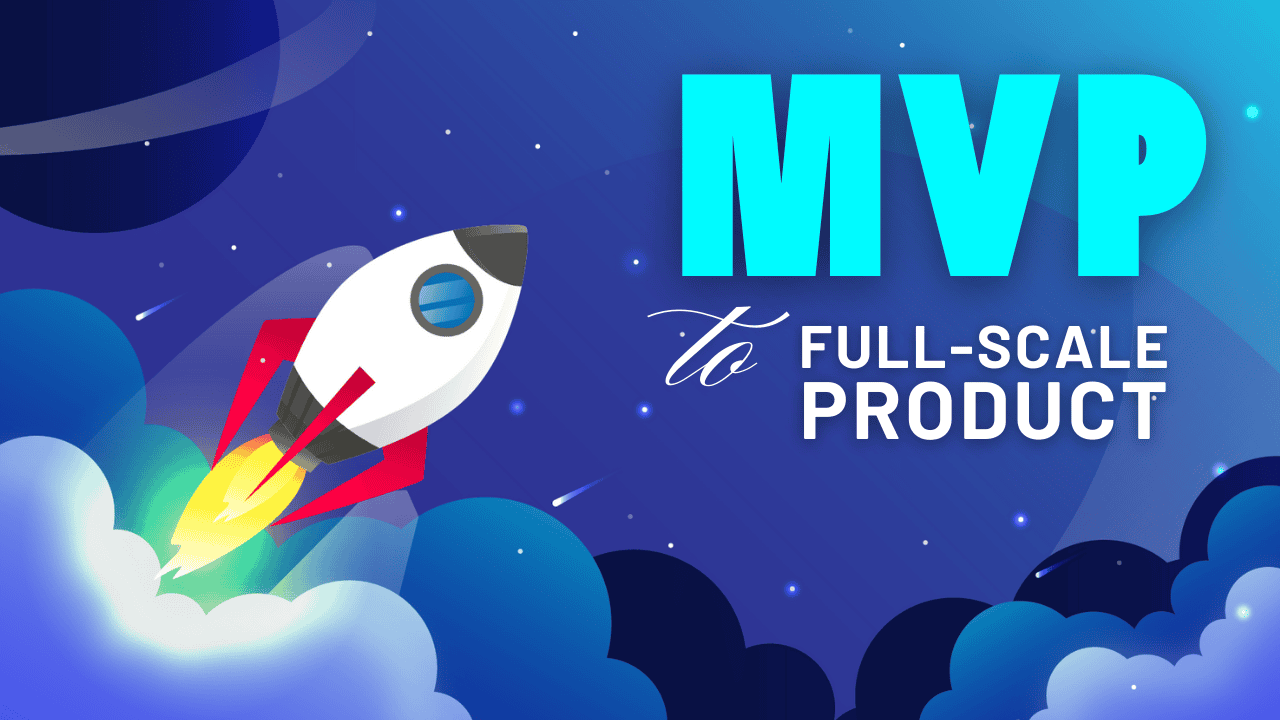Imagine you’ve launched your MVP, and it’s gaining traction. Users are engaging with your app, showing real interest in what you offer. So, what’s the next step? It’s time to scale. While scaling can seem daunting—with the workload, risks, and big decisions ahead—following the right strategies can make all the difference. Here, we’ll walk you through essential tips to transform your MVP into a robust, full-fledged product. Let’s dive into the key steps for growth and success.
MVP vs full-scale product: What’s the difference?
Before you start building a post-MVP roadmap, it’s worth clarifying what the main differences are between an MVP and a full product, and why it’s not enough to focus on the former.
You should know that
- MVP helps you test the viability of a business idea;
- You can find out how the target audience reacts to your offer and collect feedback from users;
- MVP helps you realize if you can withstand the competition.
If you already have a product idea but are hesitant to start building a full-featured product, consider creating a Minimal Viable Product (MVP) to test the waters. Yes, the MVP functionality may be somewhat limited compared to the feature set of a full product. But think about it: what if you don’t need to build that many features?
So, if you’re wondering what comes after the MVP, there is only one name for it: scaling.
How to scale your MVP: 6 steps you need to take
Your MVP is successful and you want to scale. How do you get there? Here are the steps for turning your MVP into a full-scale product.
Step 1. Be honest with yourself about your MVP’s success
When you created your MVP, you probably had certain goals in mind. These might include a certain number of downloads if it’s an app, a successful social media community because if you’re not using the power of social media today, you’re losing your target audience, or the number of active users, analytics performance, and so on. To understand if your MVP is successful, rely only on numbers, not on the feelings or impressions of your friends, team members or relatives (these people will love everything you do).

Step 2. Listen to what people say
This stage involves deep and multifaceted work with users. Don’t limit yourself to the standard MVP stages, go further and talk to people:
- Ask them what they like most about your app or website;
- Find out what they miss or have trouble with;
- Find out what problems and tasks your product helps them solve;
- Ask users what similar applications they’ve used and why they chose yours.
As you can see, there is work to be done to improve the user experience of your product, including the interface, design, menus, functionality, etc. User testimonials will tell you what needs to be changed or improved because they reflect the real picture, not the desired one. You can also invite users to be part of the product development process. Ask them to customize the product – choose the color, shape or filling of the product. It can be a gift box, a piece of jewelry, a design for a T-shirt, etc. This way, you’ll know your audience’s specific preferences instead of relying on guesswork, so you can use that insight to deliver a personalized user experience.
Step 3. Get into marketing
As a startup just beginning its journey, you should be aware of certain risks along the way. According to statistics, 42% of startups fail because they did not realize the market needs. In other words, they did not pay enough attention to marketing. To avoid such a scenario, get involved in marketing.
Frankly speaking, there’s no point in improving a product if the audience doesn’t see it anyway. You need a well-thought-out marketing strategy to grow your product audience qualitatively and quantitatively. For example, it won’t hurt today to know how to get the first thousand subscribers on TikTok or Instagram, because that’s where the audience is most active. In general, make sure you have a team of marketers with successful hands-on experience on your side, because your MVP is already out there, so it’s time to promote it.
Step 4. Scale incrementally
You might think that scaling an MVP requires changing the product up and down. In fact, you can start by scaling only certain features of your initial product. To do this, you should rely on product usage analytics and anticipate future user needs. With local scaling, you can do it incrementally, which means you won’t rush to spend your budget on something that may not need to be scaled. At the same time, incremental scaling or changes to the product don’t disrupt users. They are already comfortable with a certain format of your product, so sudden changes can turn them off. Instead, being consistent about how you change and scale will allow you to stay in tune with your audience.
Speaking of keeping in touch with your audience.
Step 5. Get users involved
The idea is to respond immediately to user actions, whether it’s a review, a letter, or a request for technical support. Remember that your product should be built with the user in mind, so do your best to keep users and customers engaged. Artificial Intelligence is great for this, which is also useful in marketing. You can set up a chatbot or other AI tools to communicate with users so you don’t leave them unheard. If you are an AI startup, you should consider the concept of minimum viable quality. It’s too risky to move forward without knowing what quality your system needs to meet the minimum requirements of your target market.
Step 6. Put data security and privacy at the top of the list
Once you’ve built and launched your MVP, you’ve probably taken care of data security and privacy. However, continuing to work with your product means only one thing: you must increase the level of security you already have in place because the product will scale and grow, and therefore require more serious measures to protect user and system data. Think about increased requirements for user passwords, double encryption, compliance with relevant security regulations, and so on.
And one more thing. This may seem obvious, but we want to remind you that your already scaled product should be tested. Make sure new features work correctly and that there are no bugs.
Check the system thoroughly and repeatedly for bugs and other problems.
And last but not least. How are you going to monetize the finished product? If the MVP only tested whether users need your business offering, the full-scale product is designed to make money for you. How will you do that?
Now that we’ve outlined the main steps in the journey from MVP to full-scale product, let’s summarize.
Conclusion
As you scale your MVP, remember to prioritize audience engagement, marketing, and incremental changes. Don’t rush to scale the entire product, but scale incrementally by adding specific system features. Also, listen to what people are saying and monitor the market to deliver a product that is in demand instead of a one-size-fits-all solution.
Finally, be patient and understanding. A successful product is not built overnight. You are on a journey full of change. Be ready to respond quickly to change and evolve as your customers’ interests and needs change.

